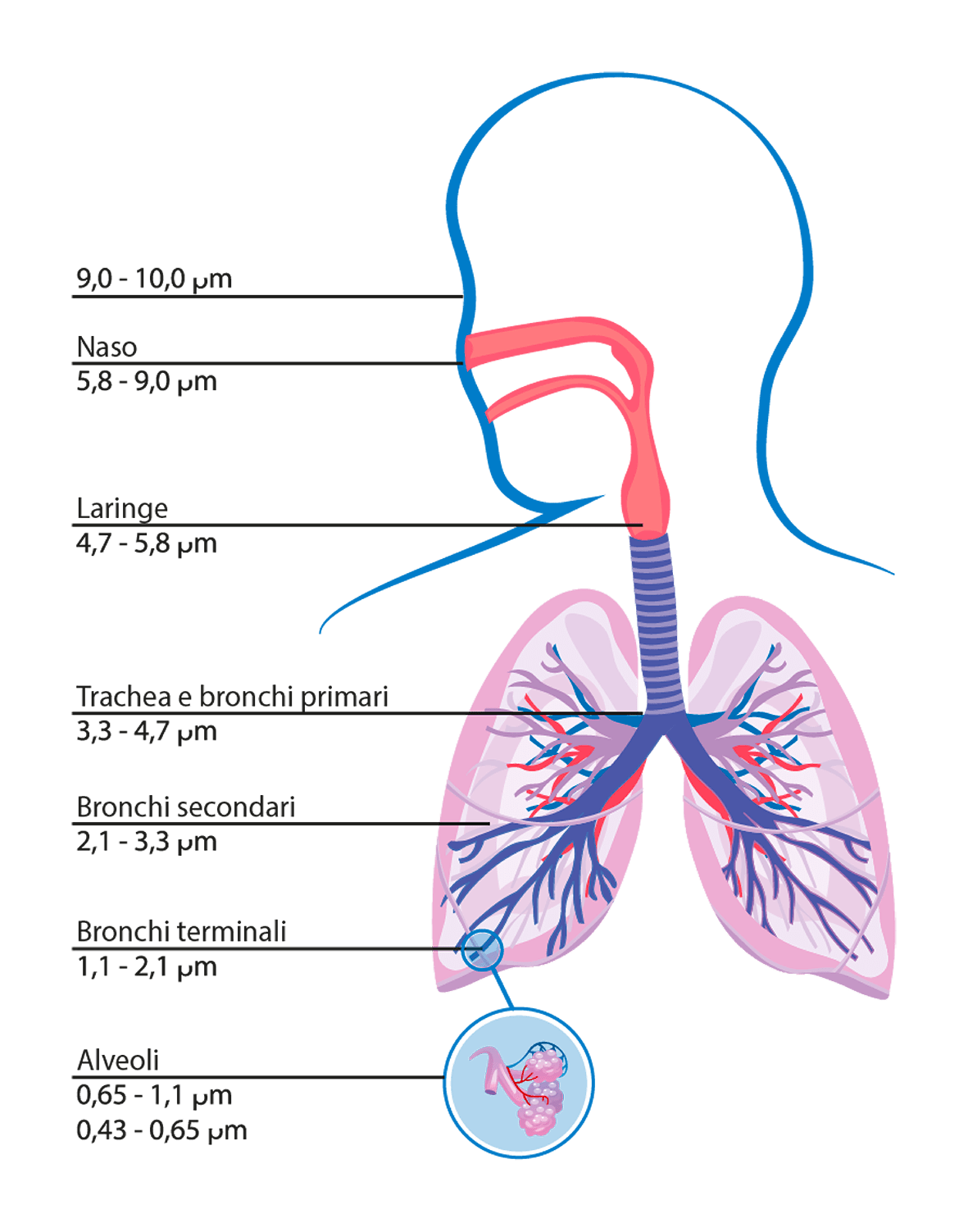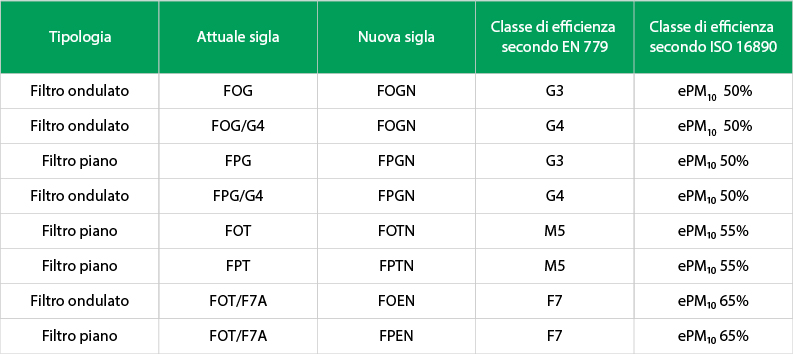ISO 16890
The new air filter classification standard.
Air pollution emergencies have now become a fact of life. According to the WHO, 92% of the world’s population live in places where air quality levels do not comply with the limits set. Also according to the WHO, fine particles are responsible for around 2 million deaths worldwide each year.


Fine particles are subdivided by particle size into “PM” (ParticulateMatter) categories. We will all have heard of PM10, PM2.5 and PM1. Each of these stands for a range of pollutant size:
- PM10 – particulate matter consisting of particles of less than 10 µm and up to 0.3 µm
- PM2,5 – fine particulate matter with a diameter of less than 2.5 µm µm and down to 0.3 µm
- PM1 – particulate matter with a diameter of less than 1 µm µm and down to 0.3 µm
The micrometre (or mìcron), indicated by the symbol µm, is equal to 10-6 m (one millionth of a metre, or one thousandth of a millimetre).
Fine particles are subdivided by particle size into “PM” (ParticulateMatter) categories. We will all have heard of PM10, PM2.5 and PM1. Each of these stands for a range of pollutant size:
- PM10 – particulate matter consisting of particles of less than 10 µm and up to 0.3 µm
- PM2,5 – fine particulate matter with a diameter of less than 2.5 µm µm and down to 0.3 µm
- PM1 – particulate matter with a diameter of less than 1 µm µm and down to 0.3 µm
The micrometre (or mìcron), indicated by the symbol µm, is equal to 10-6 m (one millionth of a metre, or one thousandth of a millimetre).

The terms “fine particles”, “PM10” and “PM2.5” have now become common jargon and we can visit information sites for a better understanding of their meaning and to keep up to date with pollution levels in the places where we live. Therefore, given this widespread availability of information and level of awareness, it has been a natural step to update the regulations to cover the assessment of filter particulate matter filtration performance.
The new ISO 16890 international standard on filter classification does just that: it correlates particulate matter with filter performance.
The standard establishes 4 efficiency categories:


The acronym ePMx is then combined with the percentage that indicates the filter efficiency for a given category. For example, “ePM10 50%” means that the filter is able to trap 50% by weight of the PM10 particulate matter entering the filter. Filters that do not trap at least 50% of the PM10 are classified in the “coarse” efficiency category, the lowest class.
The Gardair pre-filtration range includes filters with ISO COARSE and ISO ePM10 classification in corrugated and flat versions. The table below compares the filters tested according to ISO 16890 and the old EN 779 standards:
The acronym ePMx is then combined with the percentage that indicates the filter efficiency for a given category. For example, “ePM10 50%” means that the filter is able to trap 50% by weight of the PM10 particulate matter entering the filter. Filters that do not trap at least 50% of the PM10 are classified in the “coarse” efficiency category, the lowest class.
The Gardair pre-filtration range includes filters with ISO COARSE and ISO ePM10 classification in corrugated and flat versions. The table below compares the filters tested according to ISO 16890 and the old EN 779 standards:
